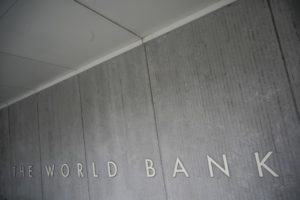MANILA, Philippines—The share of the national government’s debt to gross domestic product (GDP) climbed to 48.1 percent at the end of the first half of the year as the economy fell into a recession while payables surged to a new high in June, Department of Finance (DOF) data released on Friday (Aug. 7) showed.
Based on the calculations of Finance Undersecretary Gil Beltran, who is also the Department of Finance (DOF) chief economist, the end June debt-to-GDP ratio rose from 43.4 percent in March and 39.6 percent in end 2019. The debt-to-GDP ratio mirrors a country’s ability to pay its debts.
The national government’s outstanding debt hit a new record P9.05 trillion in June, while GDP contracted by an average of 9 percent during the first two quarters.
Since the government continued to borrow heavily from domestic sources, which accounted for 76 percent of gross borrowings from January to June, the domestic debt-to-GDP ratio jumped to 32.9 percent from 29.7 percent a quarter ago and 26.3 percent in 2019.
But as the government secured more loans and forayed into offshore commercial borrowings to finance COVID-19 response, the share of foreign debt to GDP increased to 15.2 percent in the first half of the year from 13.6 percent one quarter ago and 2019’s 13.3 percent. The additional loans were from multilateral lenders and bilateral development partners.
As the government will borrow P3 trillion each this year and next year to better address the health and socioeconomic crises inflicted by the COVID-19 pandemic, the Philippines’ debt-to-GDP ratio was projected to further rise to 53.9 percent by yearend and 58.3 percent in 2021.
The last time that the Philippines had a debt-to-GDP above 50 percent was 50.2 percent in 2010.
If attained, the projected debt-to-GDP ratios in 2020 and 2021 will be the highest since the 58.8 percent recorded in 2006.
In an interview with Bloomberg Television on Friday, Finance Secretary Carlos G. Dominguez III reiterated that the government will get 75 percent of borrowings from the domestic debt market, which was currently flush with liquidity.
“We feel that our credit rating has been maintained and not downgraded, and we have been able to tap those local and foreign markets at very favorable interest rates and tenors,” Dominguez said.
“So our ability to tap [debt] markets is very strong,” Dominguez said.
In a statement last Thursday (Aug. 6), the Cabinet-level Development Budget Coordination Committee (DBCC) said that they were “confident that the national government’s debt will be kept at a sustainable and responsible level, within the 60 percent internationally-recommended debt threshold, by 2022.”


